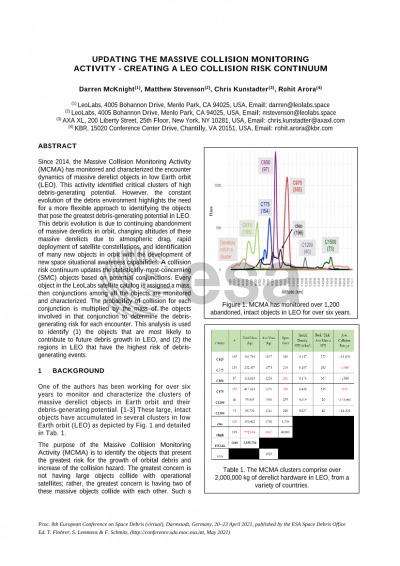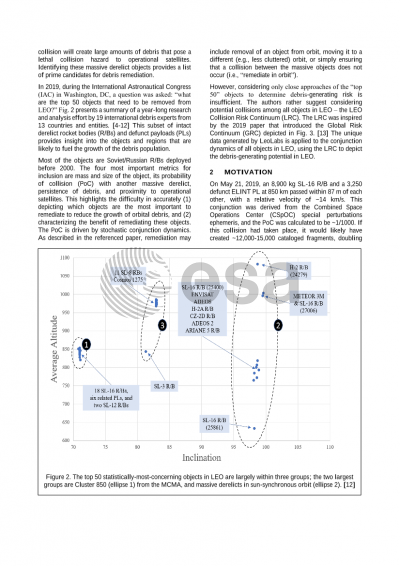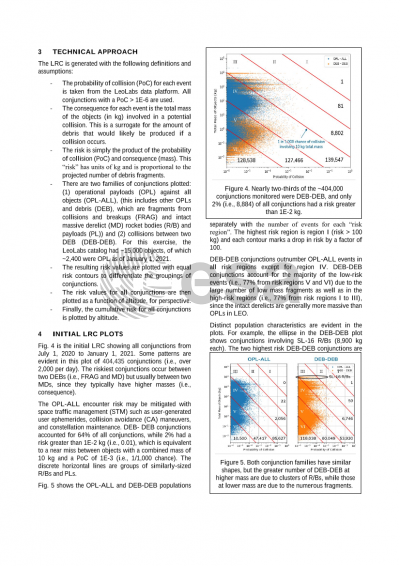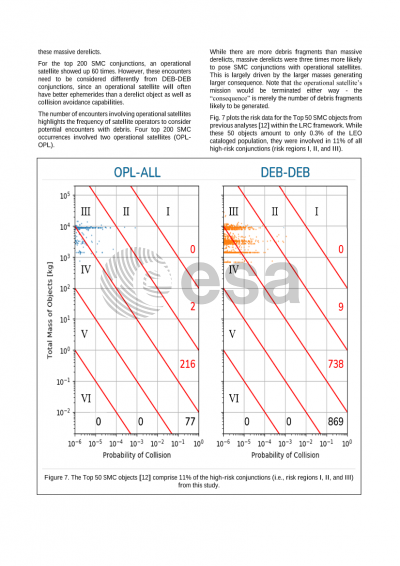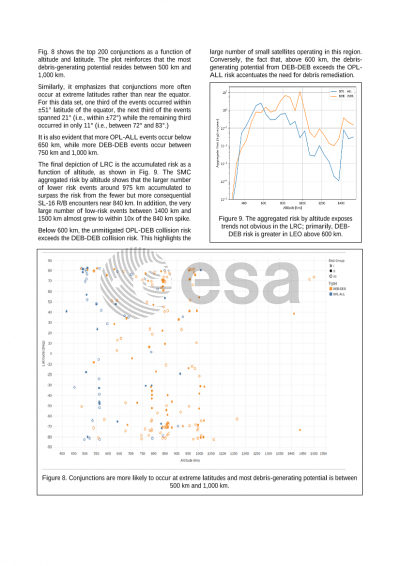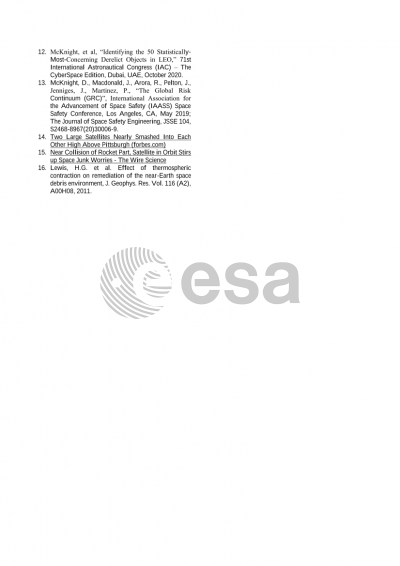Document details

Abstract
The Massive Collision Monitoring Activity has been conducted since 2014 to monitor and characterize the encounter dynamics of massive derelicts in low Earth orbit. This activity has identified critical clusters of high debris-generating potential. However, the constant evolution of the debris environment due to continual abandonment of massive derelicts, the changing in altitude of massive derelicts due to atmospheric drag, the rapid deployment of satellite constellations, and new space situational awareness data have hinted at the need for a more flexible approach to quantifying the objects that pose the greatest debris-generating potential. A collision risk continuum approach is applied to update the statistically-most-concerning objects from conjunctions in low Earth orbit. Every object in the selected satellite catalog is assigned a mass and area then conjunctions amongst the entire suite of objects are monitored and characterized. The probability of collision for each conjunction is multiplied by the amount of mass involved in each event to determine the debris-generating potential risk for each encounter. This analysis is used to identify the objects that are most likely to contribute to the future debris growth in low Earth orbit.
Preview
